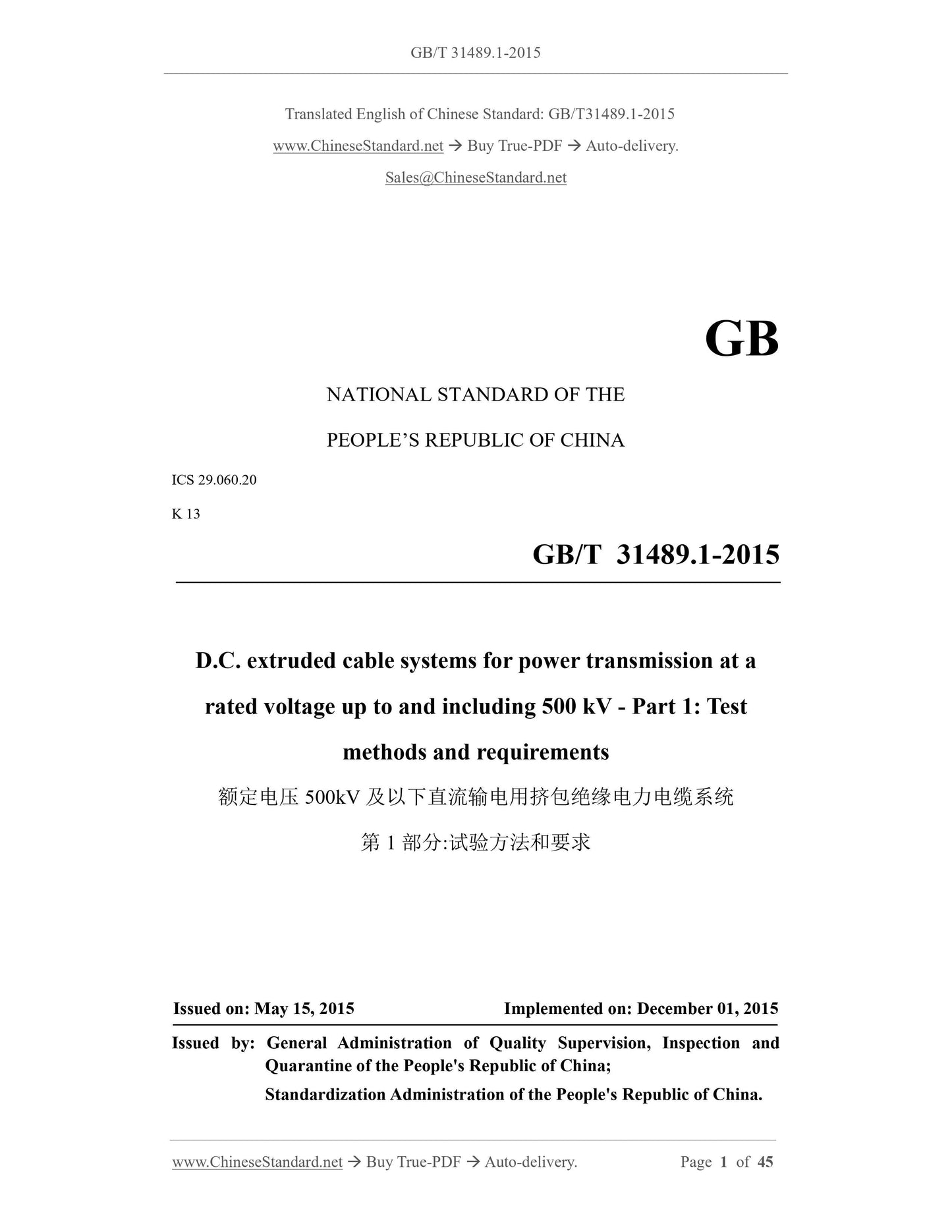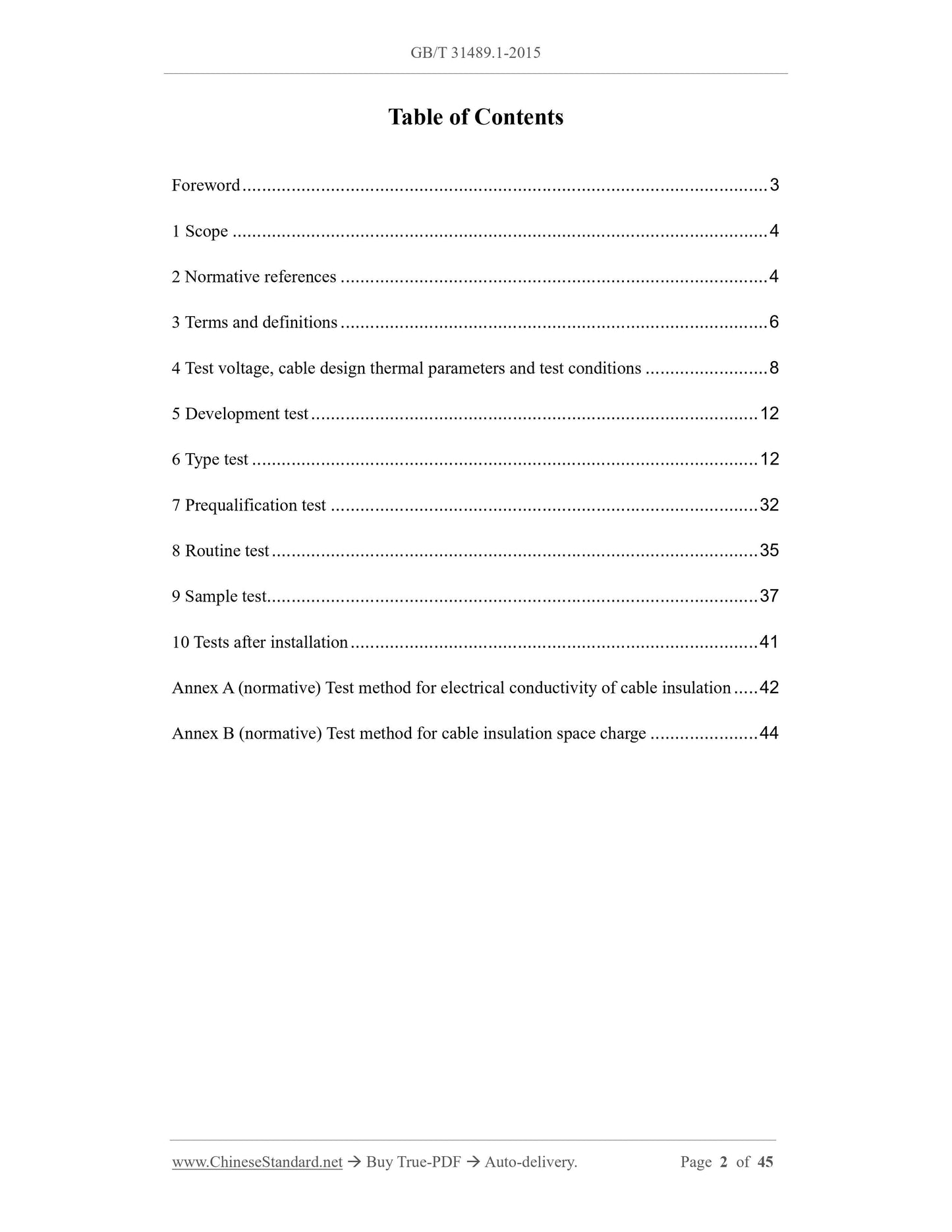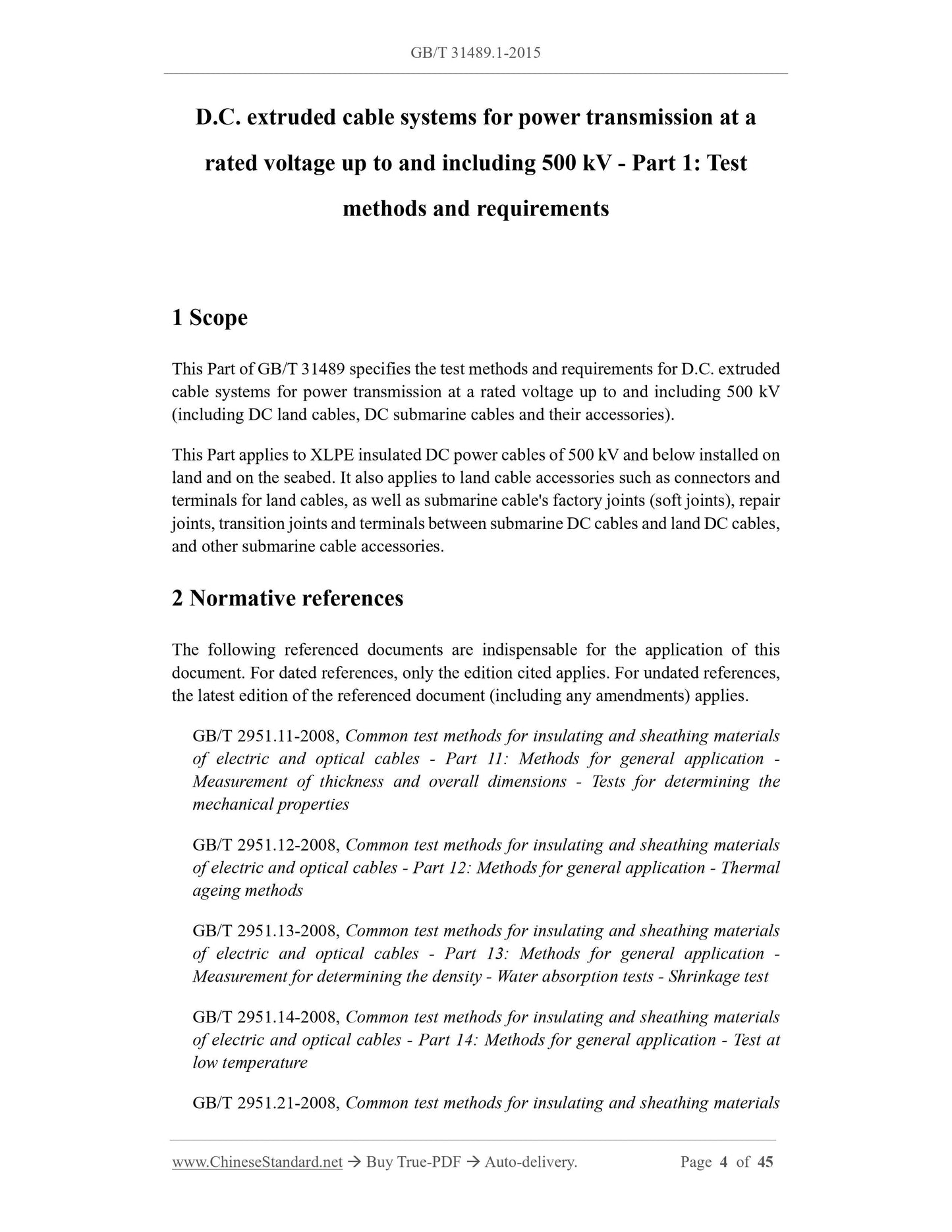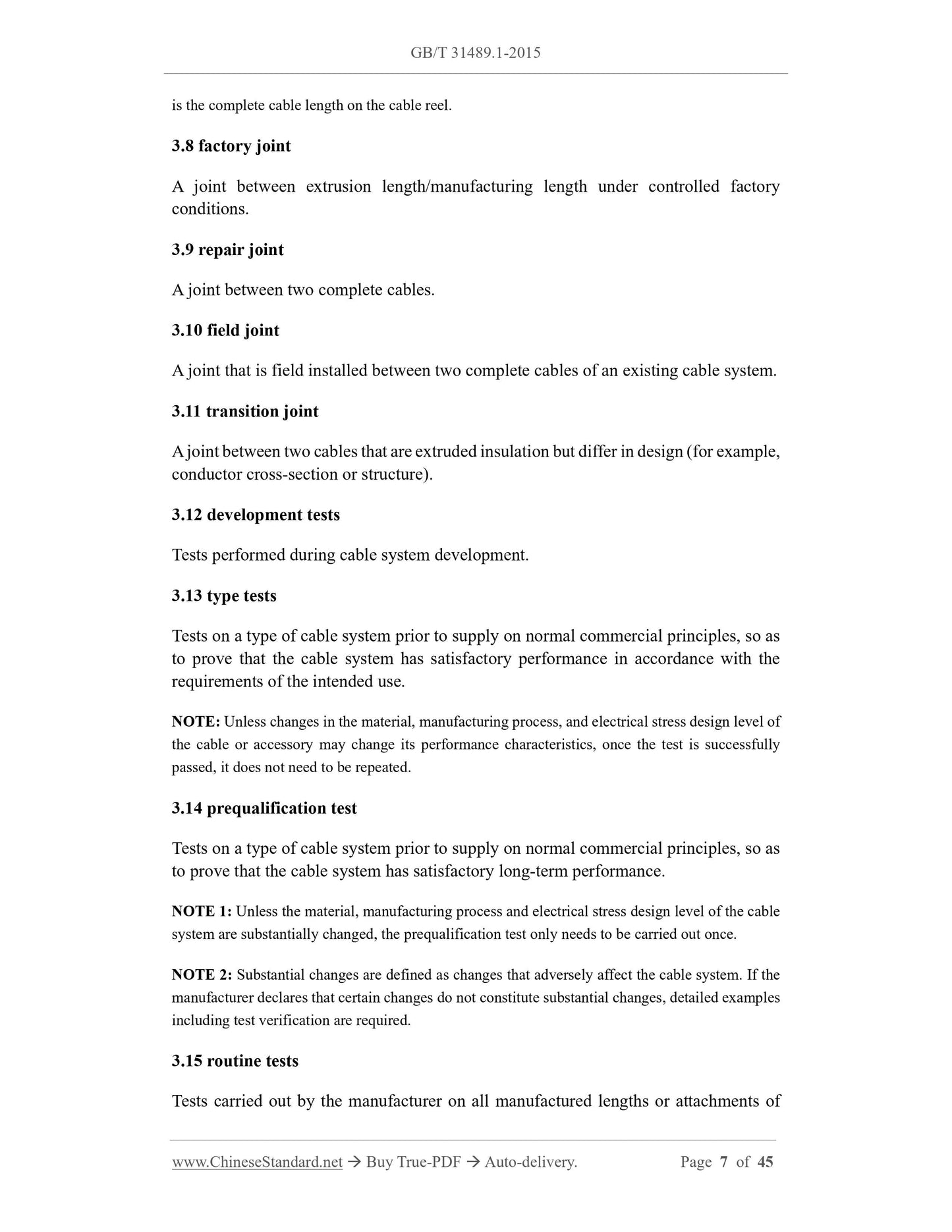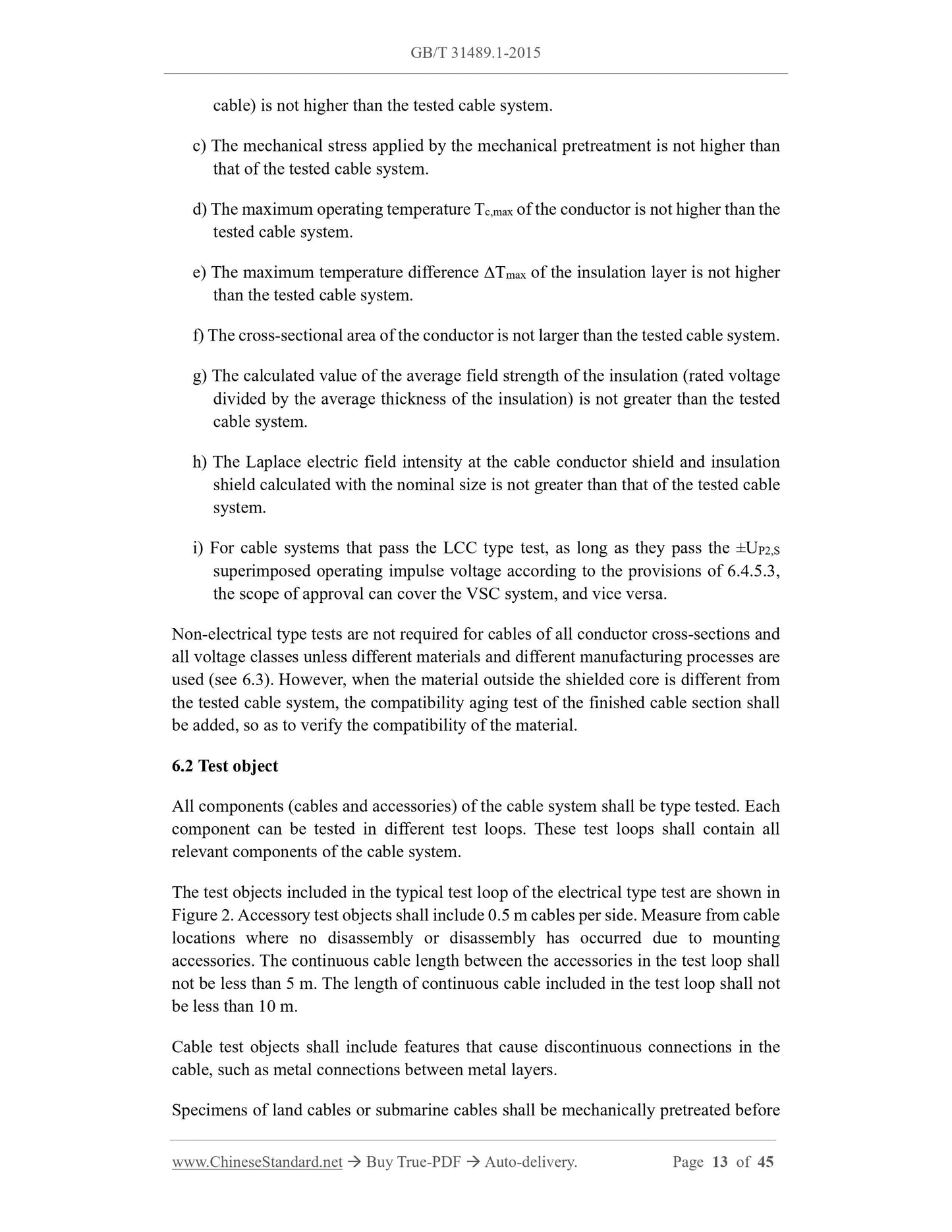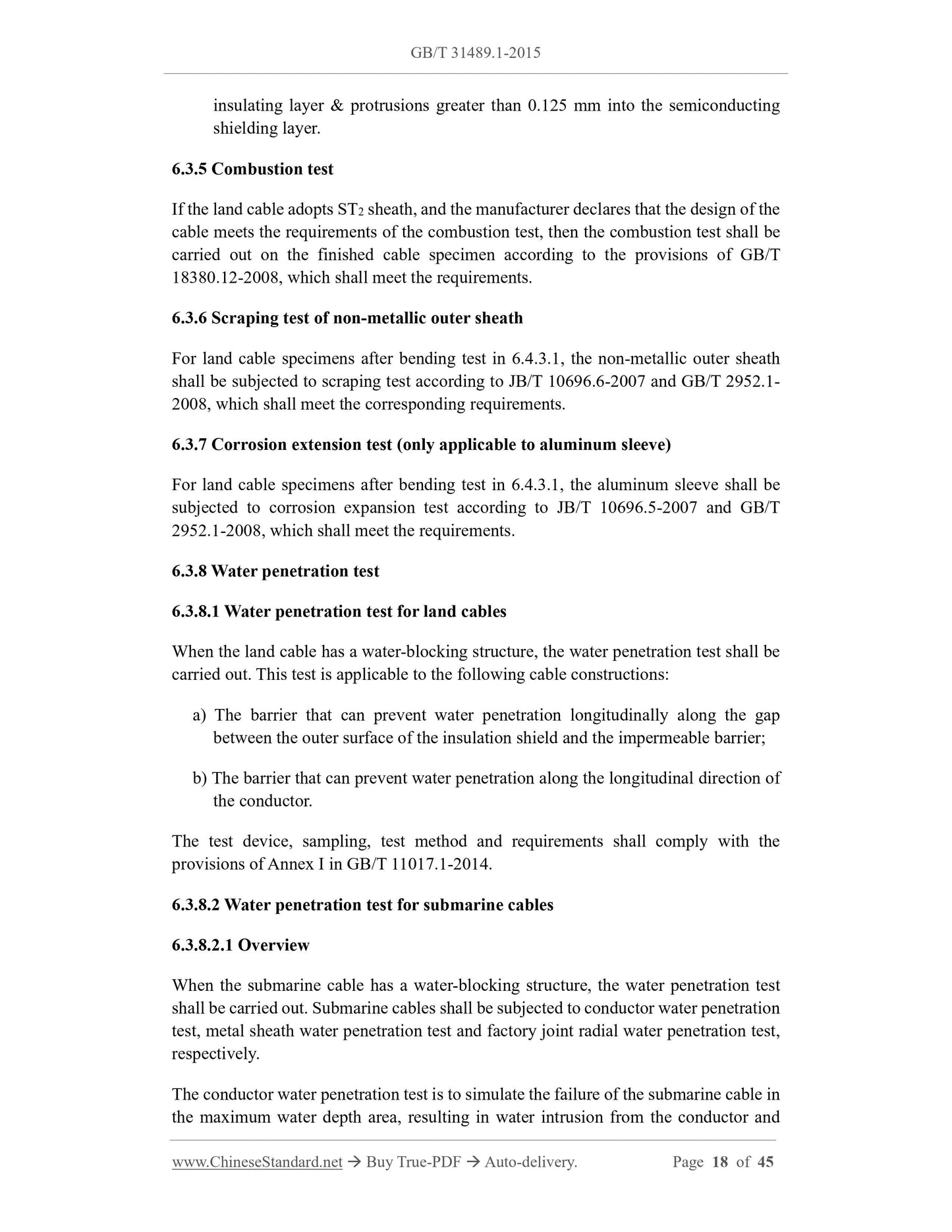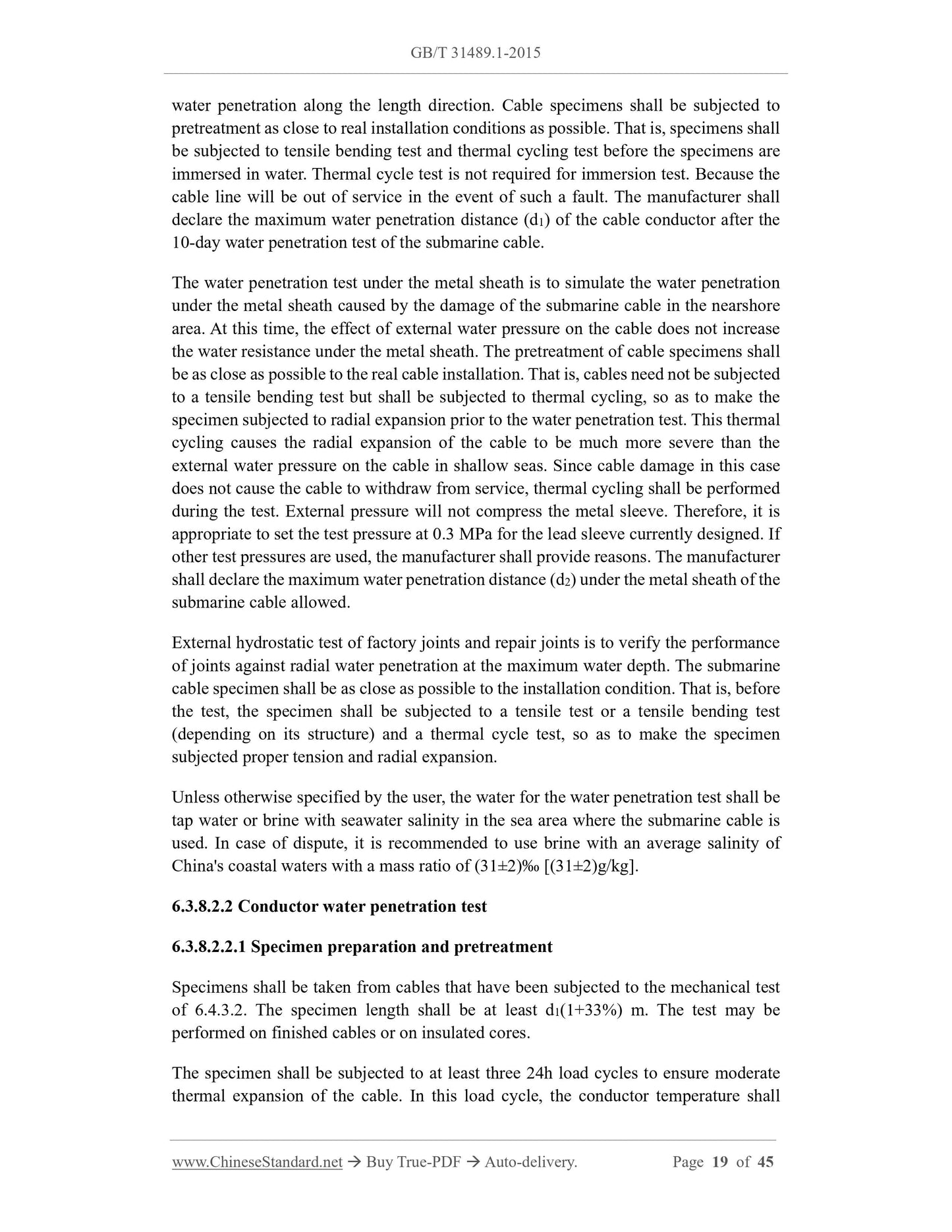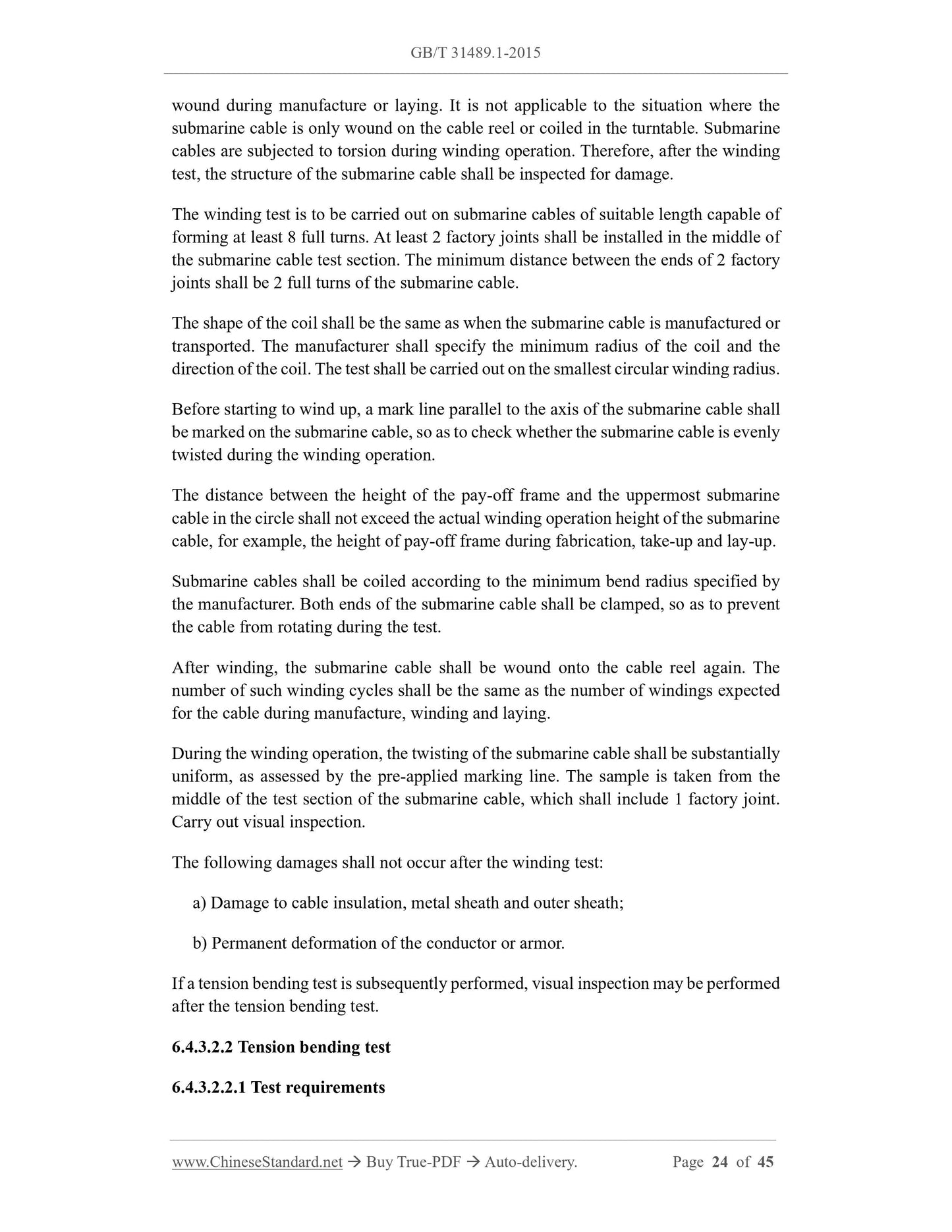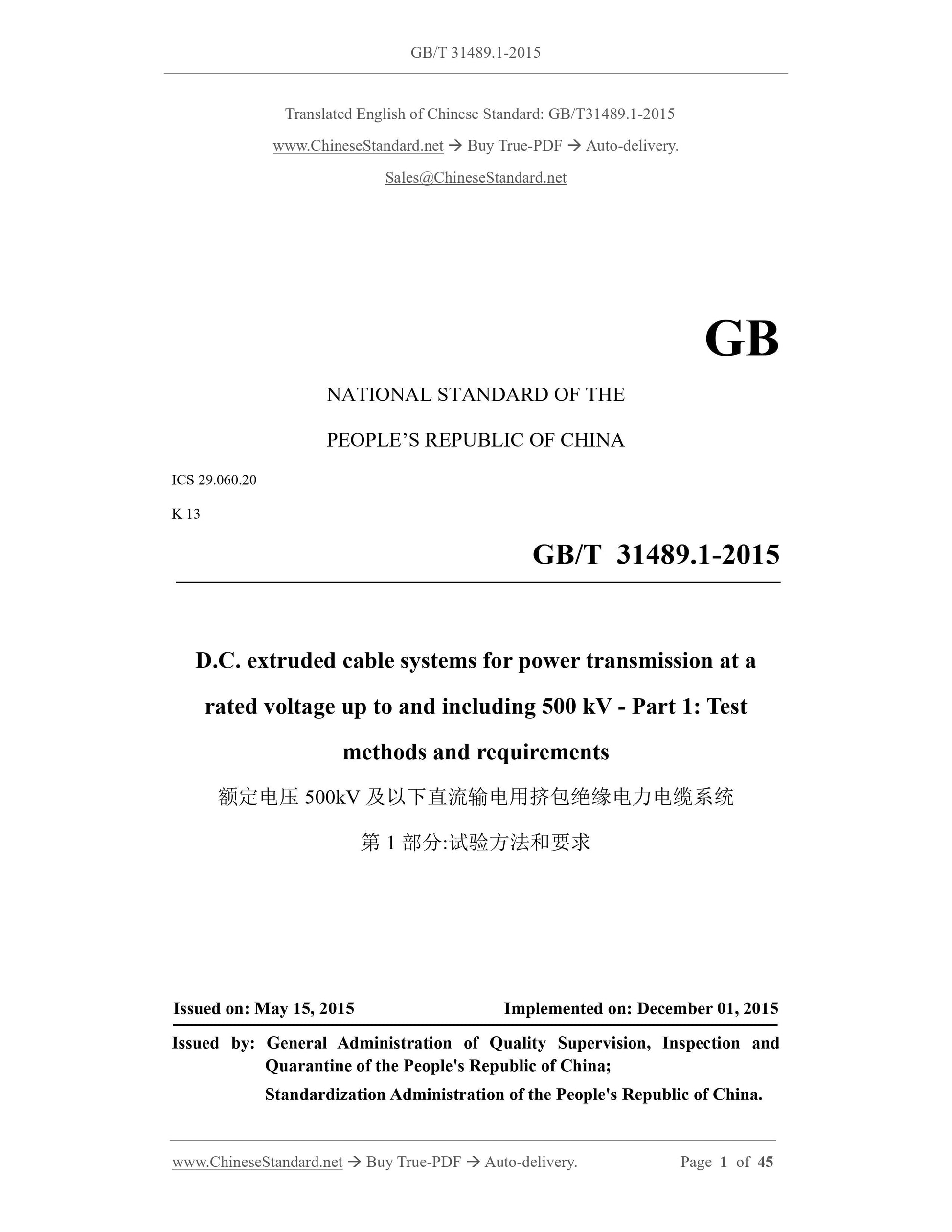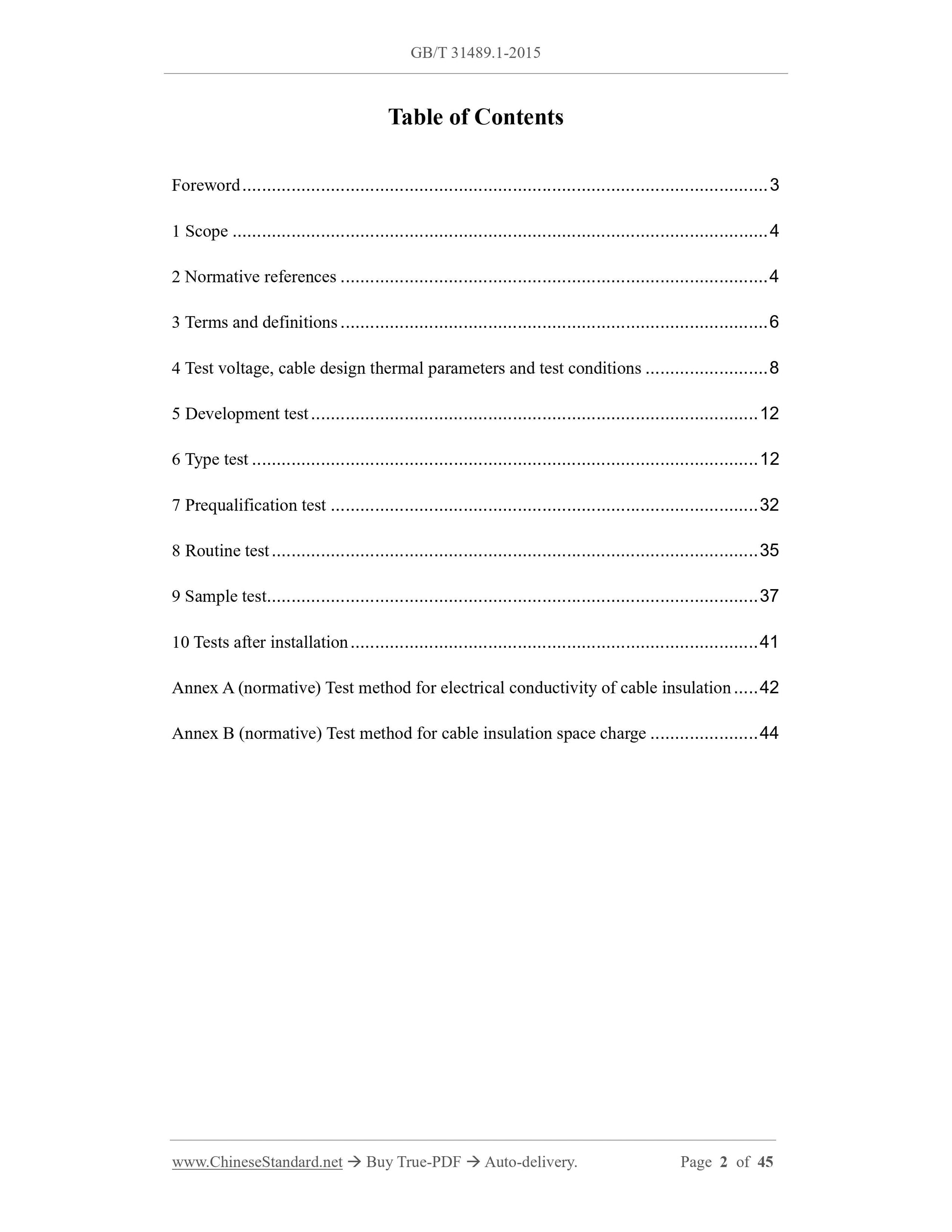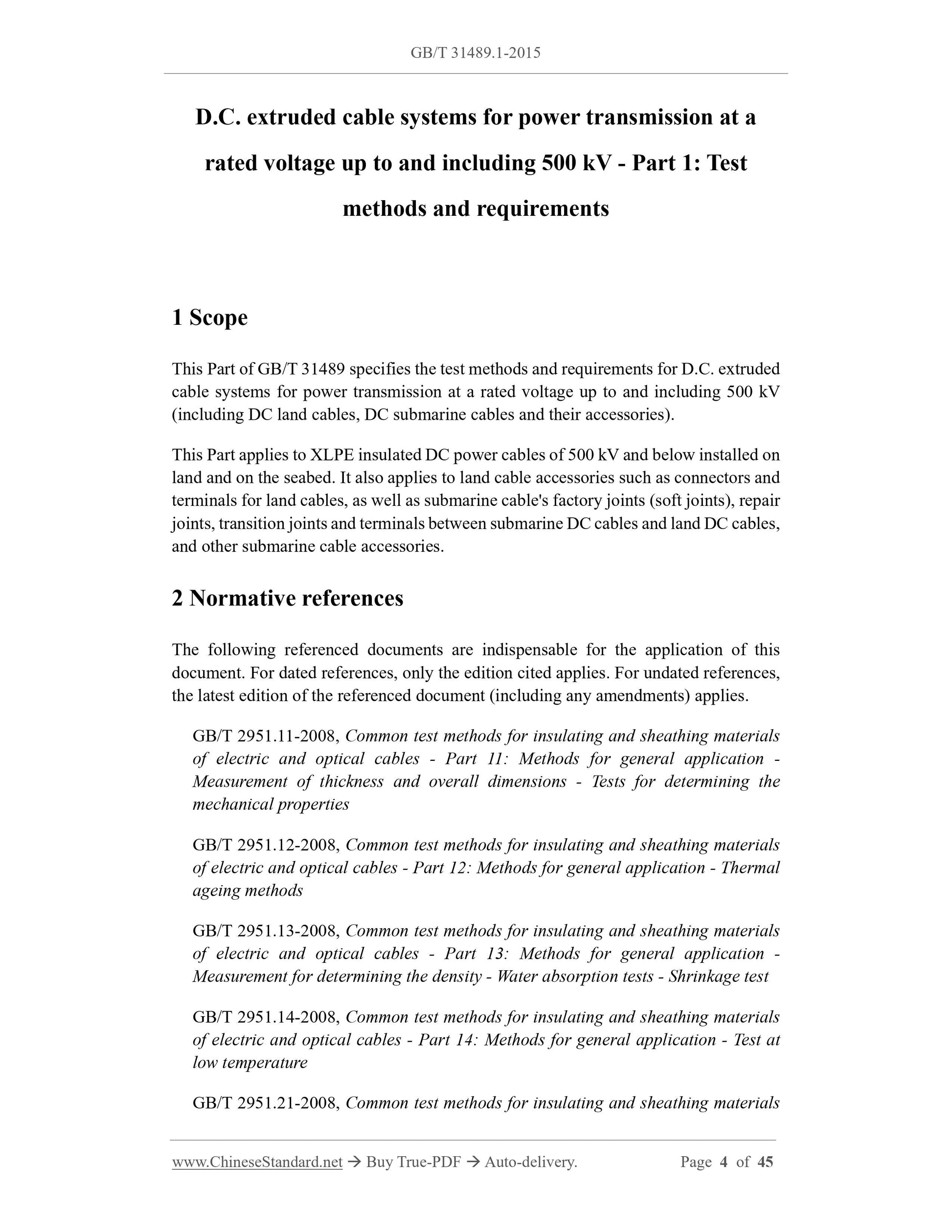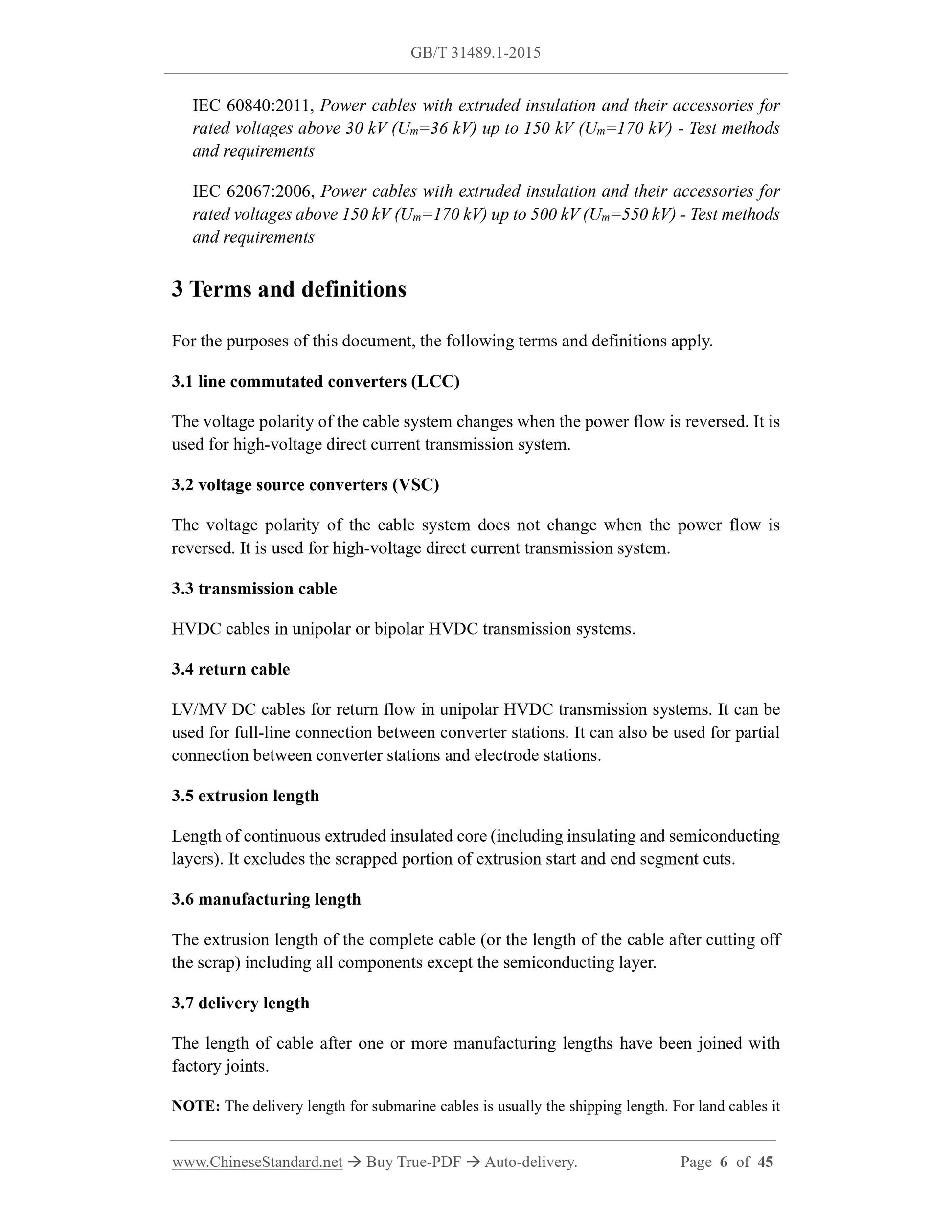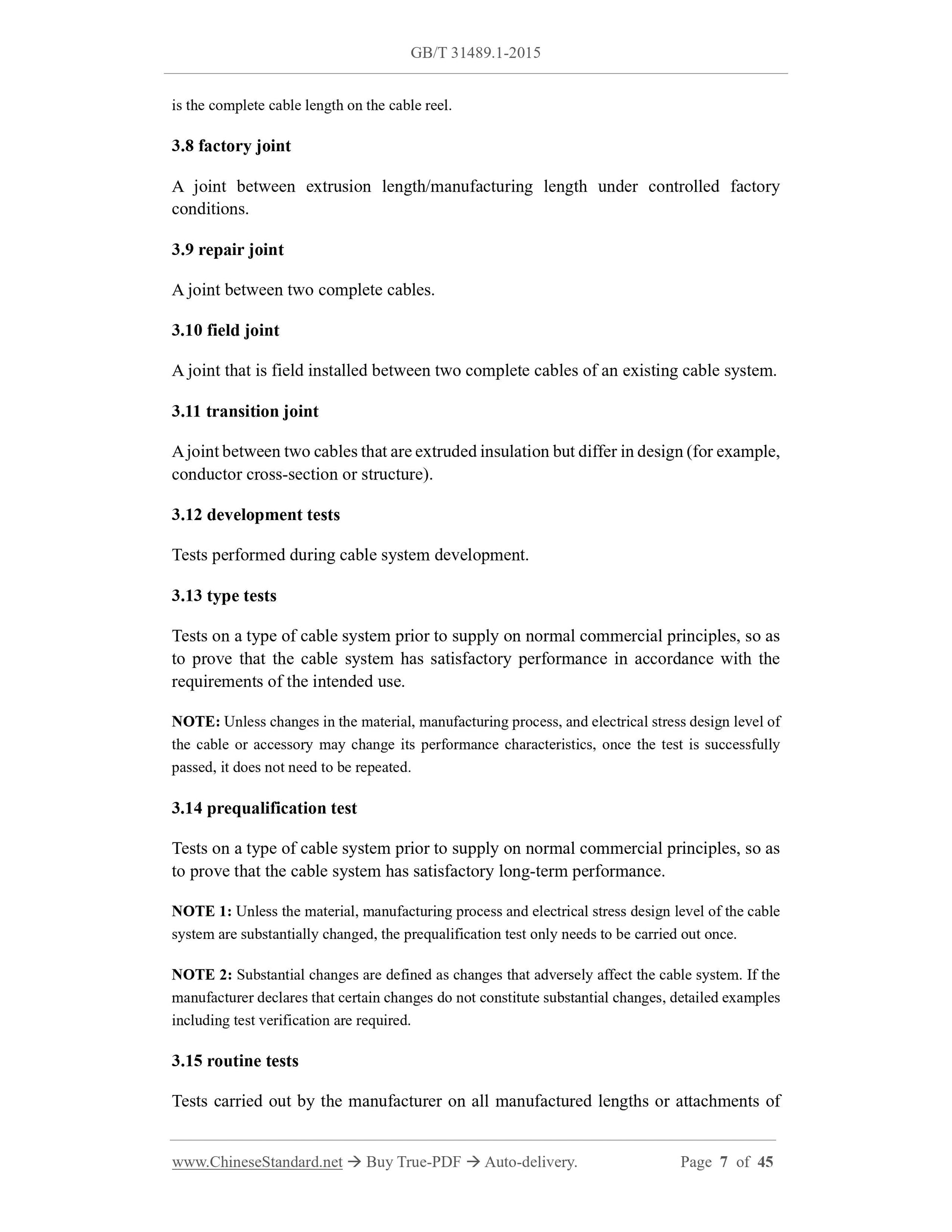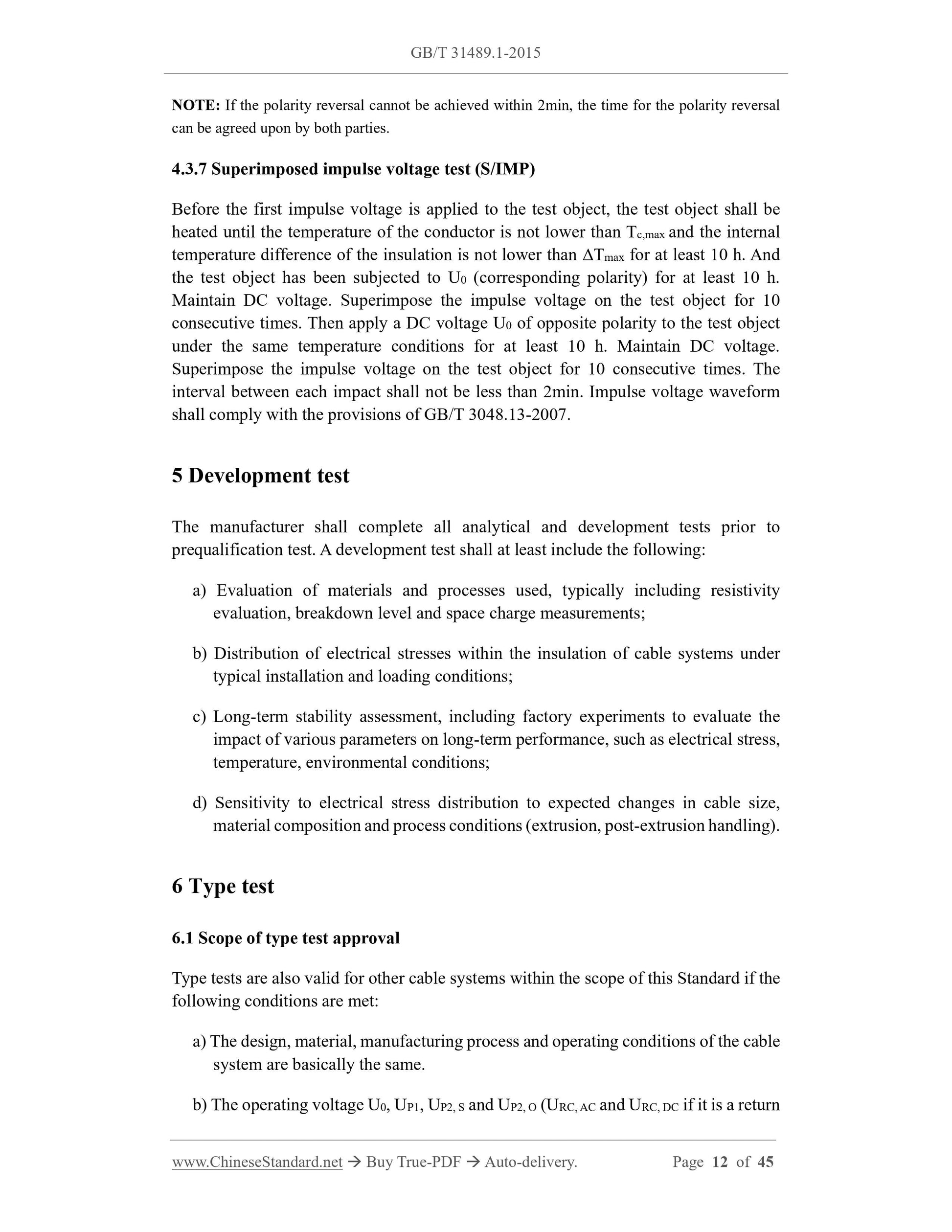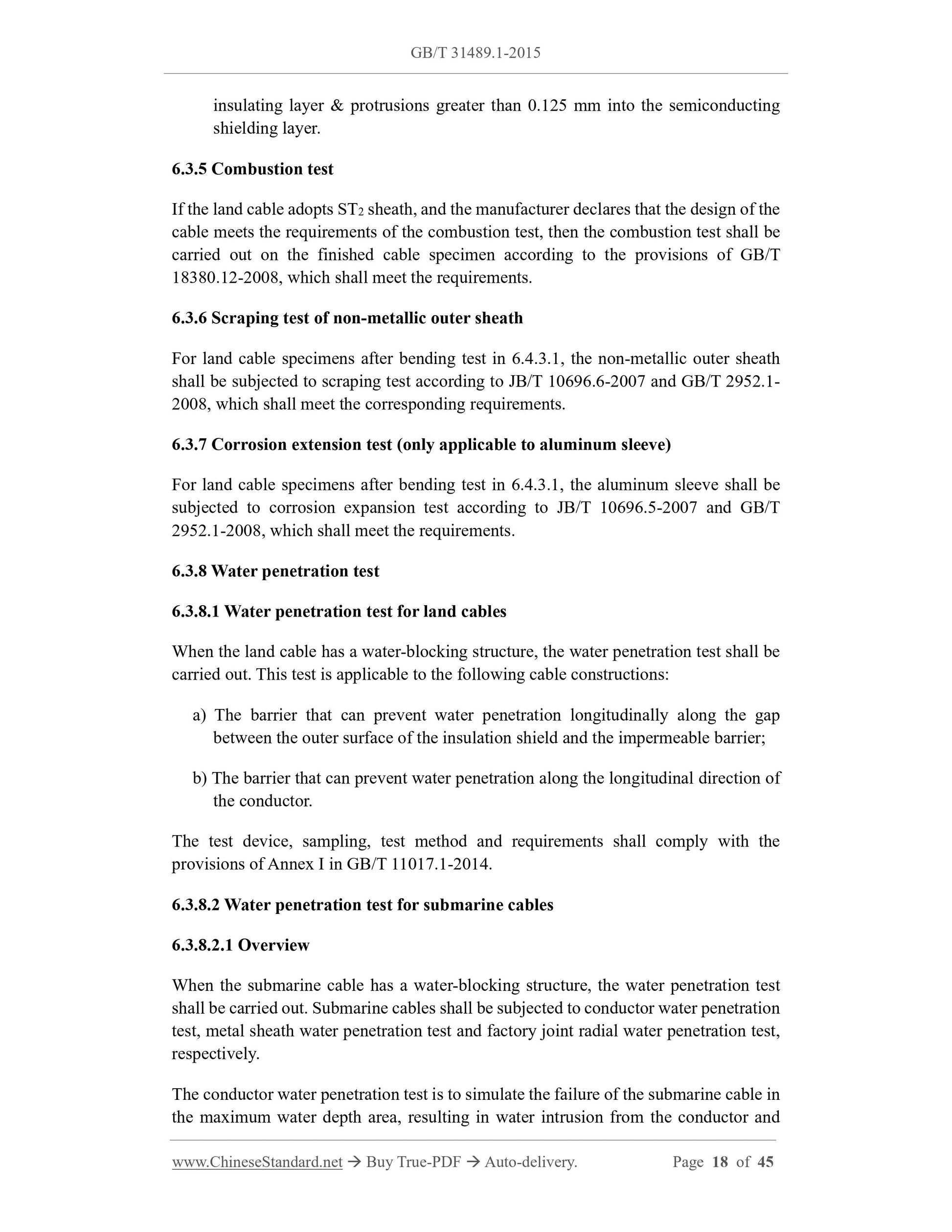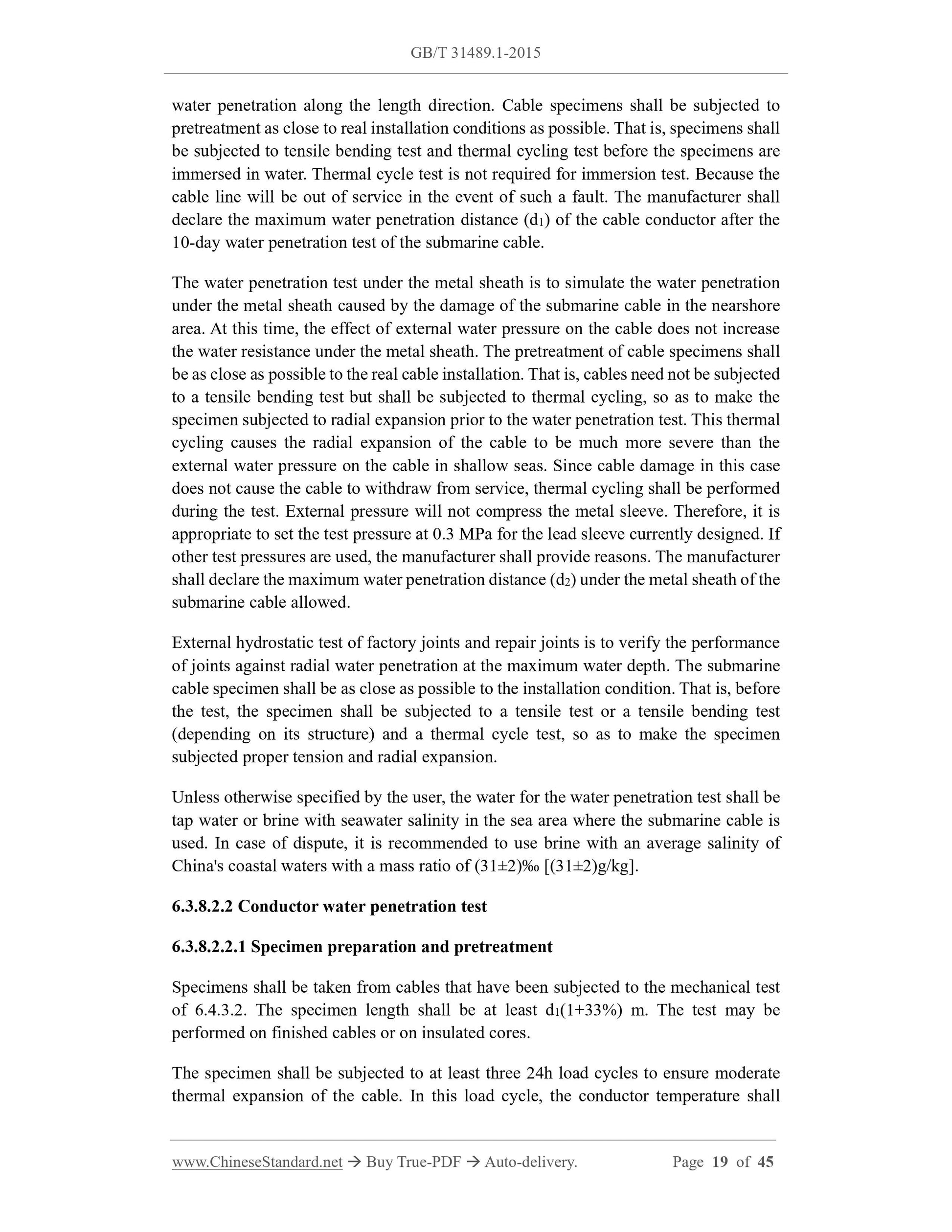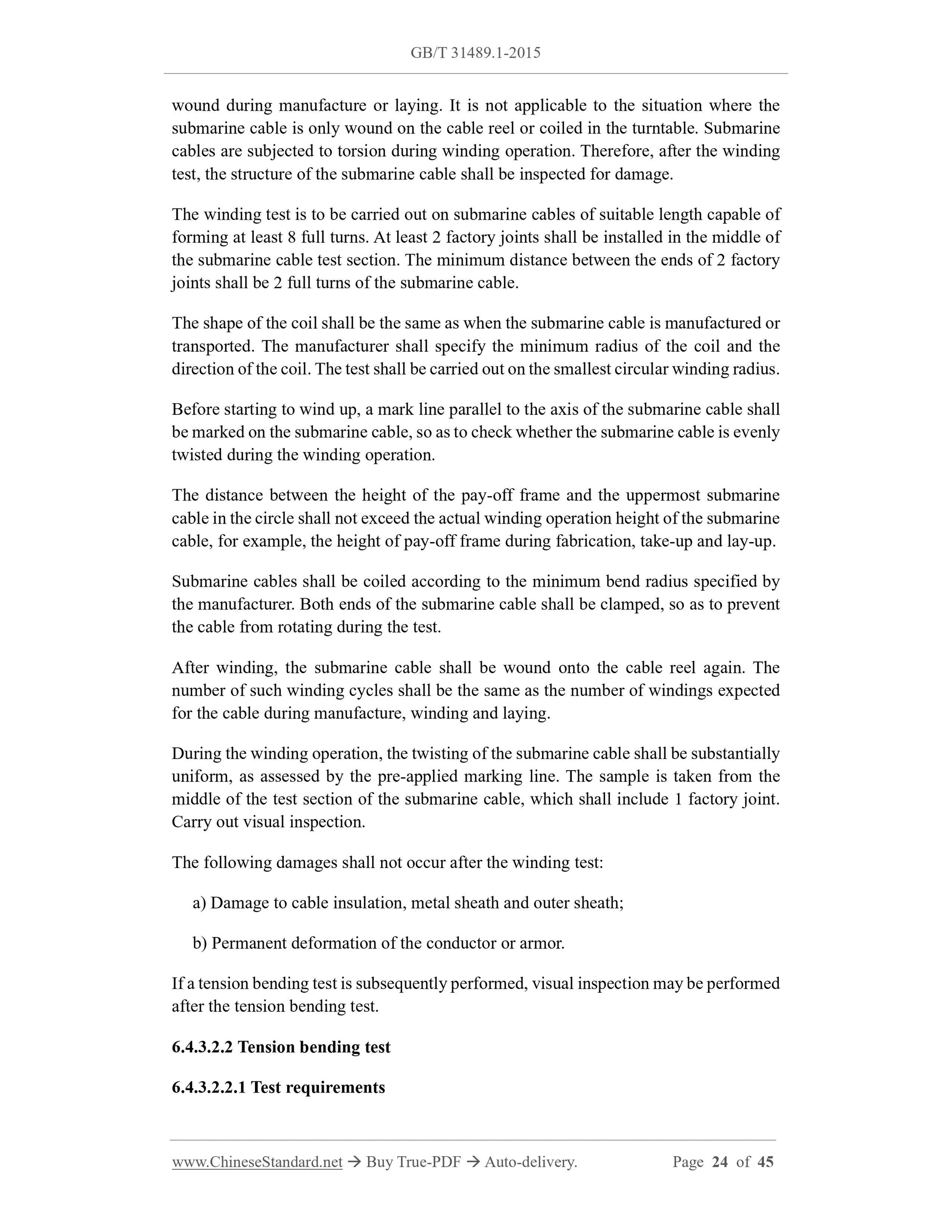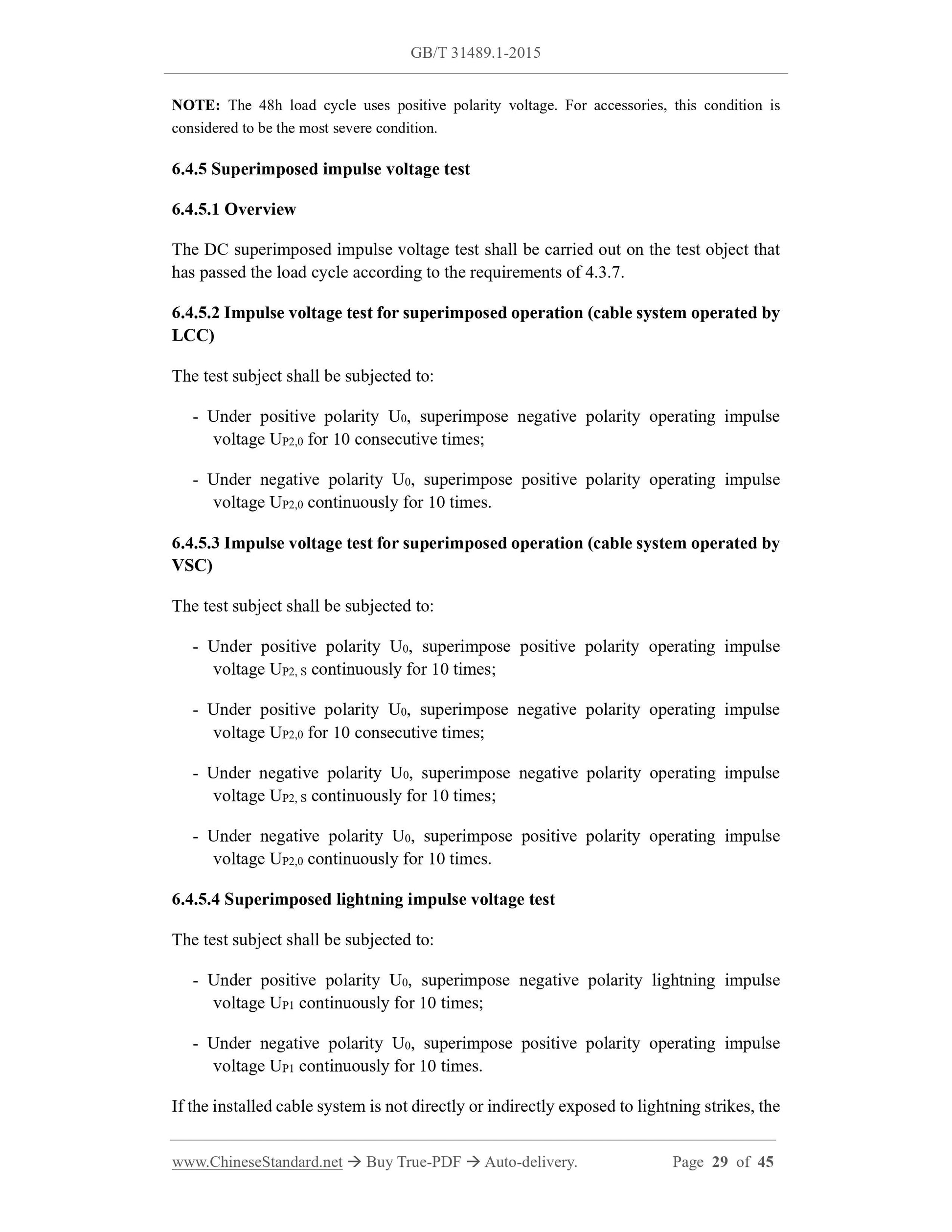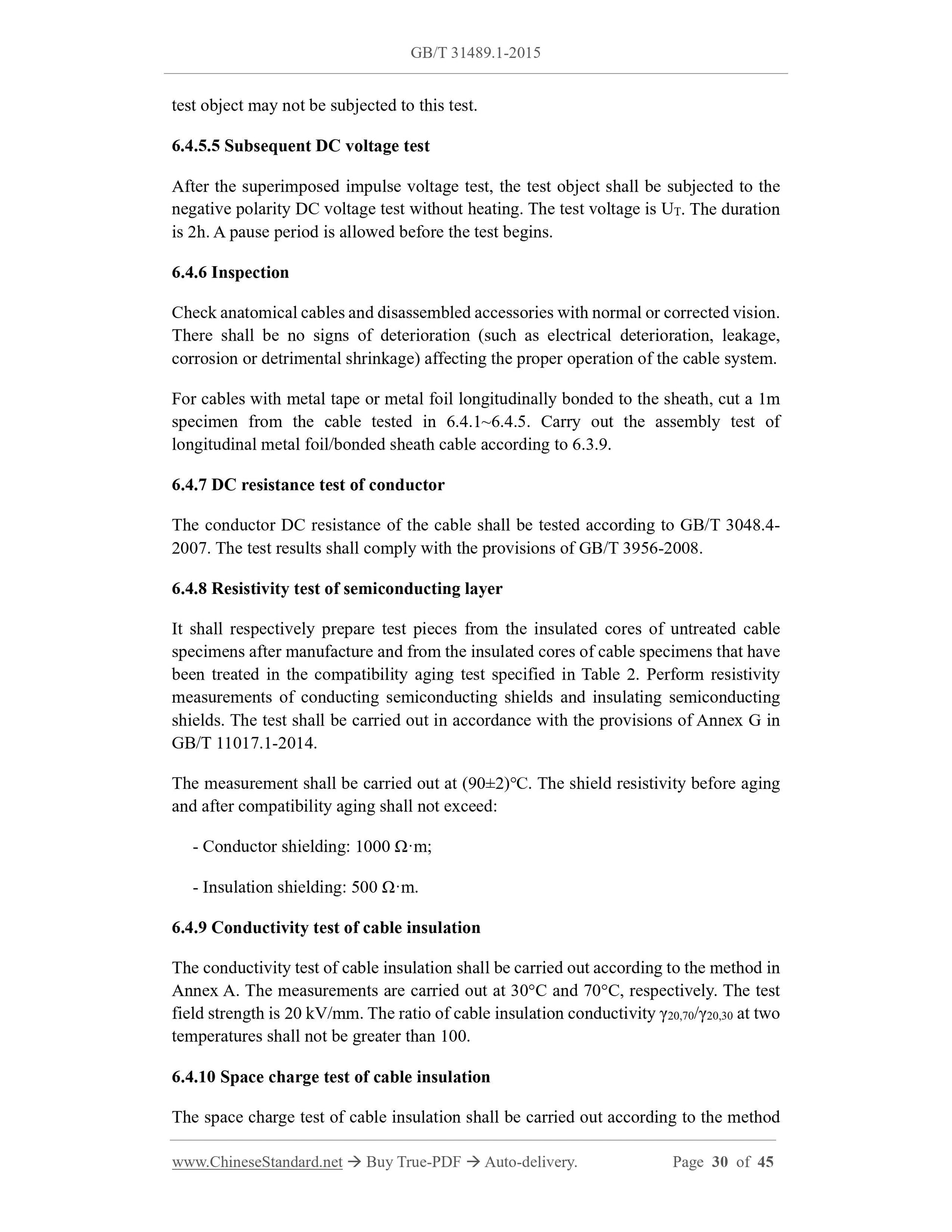1
/
of
12
www.ChineseStandard.us -- Field Test Asia Pte. Ltd.
GB/T 31489.1-2015 English PDF (GB/T31489.1-2015)
GB/T 31489.1-2015 English PDF (GB/T31489.1-2015)
Regular price
$480.00
Regular price
Sale price
$480.00
Unit price
/
per
Shipping calculated at checkout.
Couldn't load pickup availability
GB/T 31489.1-2015: D.C. extruded cable systems for power transmission at a rated voltage up to and including 500 kV - Part 1: Test methods and requirements
Delivery: 9 seconds. Download (and Email) true-PDF + Invoice.Get Quotation: Click GB/T 31489.1-2015 (Self-service in 1-minute)
Newer / historical versions: GB/T 31489.1-2015
Preview True-PDF
Scope
This Part of GB/T 31489 specifies the test methods and requirements for D.C. extrudedcable systems for power transmission at a rated voltage up to and including 500 kV
(including DC land cables, DC submarine cables and their accessories).
This Part applies to XLPE insulated DC power cables of 500 kV and below installed on
land and on the seabed. It also applies to land cable accessories such as connectors and
terminals for land cables, as well as submarine cable's factory joints (soft joints), repair
joints, transition joints and terminals between submarine DC cables and land DC cables,
and other submarine cable accessories.
Basic Data
| Standard ID | GB/T 31489.1-2015 (GB/T31489.1-2015) |
| Description (Translated English) | D.C. extruded cable systems for power transmission at a rated voltage up to and including 500 kV - Part 1: Test methods and requirements |
| Sector / Industry | National Standard (Recommended) |
| Classification of Chinese Standard | K13 |
| Classification of International Standard | 29.060.20 |
| Word Count Estimation | 33,371 |
| Date of Issue | 2015-05-15 |
| Date of Implementation | 2015-12-01 |
| Quoted Standard | GB/T 2951.11-2008; GB/T 2951.12-2008; GB/T 2951.13-2008; GB/T 2951.14-2008; GB/T 2951.21-2008; GB/T 2951.31-2008; GB/T 2951.32-2008; GB/T 2951.41-2008; GB/T 2952.1-2008; GB/T 3048.4-2007; GB/T 3048.12-2007; GB/T 3048.13-2007; GB/T 3956-2008; GB/T 4909.3-2009; GB/T 11017.1-2014; GB/T 18380.12-2008; JB/T 10696.5-2007; JB/T 10696.6-2007; IEC 60287-1-1-2006; IEC 60840-2011; IEC 62067-2006 |
| Regulation (derived from) | National Standard Announcement 2015 No. 15 |
| Issuing agency(ies) | General Administration of Quality Supervision, Inspection and Quarantine of the People's Republic of China, Standardization Administration of the People's Republic of China |
| Summary | This Standard specifies the rated voltage of 500 kV and below HVDC power cable with extruded insulation systems (including land power DC systems, the DC submarine cables and accessories) - Test methods and requirements. This section applies to installation on land and in the sea floor and below 500 kV DC XLPE power cables, cable accessories as well as land and other land cable connectors and terminals, as well as submarine cables factory connector (flexible joints), joint repair between undersea DC cable and terrestrial DC cables undersea cable accessories and other transition joints and terminations. |
Share
